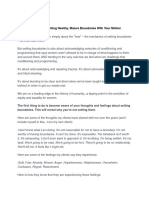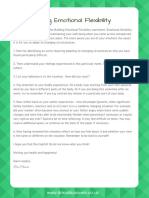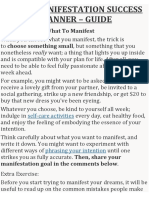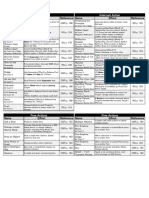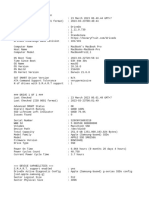100% found this document useful (3 votes)
1K views13 pagesGoal Setting Workbook
The document discusses strategies for setting and achieving goals including prioritizing important tasks, developing long and short term goals, focusing on important tasks first each day, and establishing productive daily habits. It emphasizes starting the day by tackling difficult tasks and developing habits to maximize productivity and accomplish goals.
Uploaded by
Omega CapricorniCopyright
© © All Rights Reserved
We take content rights seriously. If you suspect this is your content, claim it here.
Available Formats
Download as PDF, TXT or read online on Scribd
100% found this document useful (3 votes)
1K views13 pagesGoal Setting Workbook
The document discusses strategies for setting and achieving goals including prioritizing important tasks, developing long and short term goals, focusing on important tasks first each day, and establishing productive daily habits. It emphasizes starting the day by tackling difficult tasks and developing habits to maximize productivity and accomplish goals.
Uploaded by
Omega CapricorniCopyright
© © All Rights Reserved
We take content rights seriously. If you suspect this is your content, claim it here.
Available Formats
Download as PDF, TXT or read online on Scribd
/ 13









































































